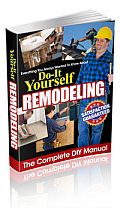Welcome to Wiring Guide
What You Should Know About Plugs Article

What You Should Know About Plugs
from:We plug in and unplug so many gadgets, gizmos, and appliances on a daily basis that we rarely give any thought to plugs at all, that is, unless there is a problem and whatever we’re trying to plug in will no longer work because of a defective or worn out plug. While this isn’t always a big deal, if you’re dealing with something expensive, instead of throwing it out and having to buy a new one, you might consider replacing the plug. Even if the item is still working, continuing to plug in anything with a damaged plug could be very dangerous and lead to injury from a shock or even a fire so it is important to stop using anything with a damaged plug and either consult a professional or replace the plug yourself. Loose prongs can be very dangerous and sometimes the covers of the plugs crack so if you see any type of damage, stop using the item until the plug is replaced.
Types of Plugs
Like many other electrical components, plugs are made of a variety of materials and each material is geared for a certain purpose. Ideally, you should replace any plug with the same type of plug that as on the cord originally but it may also help to know what the different types of plugs are and how they are best used. For example, if you’re replacing a plug on something that will be used outside, you should use a rubber or nylon plug. Vinyl plugs should only be used indoors.
You’ll also want to consider the prongs on the plug. If possible, go with a polarized plug, which you’ll easily recognize because one of the “blades” is wider than the others. All three prong plugs are polarized but not all of the two prong plugs are so look carefully if you are purchasing a two prong plug because some of them are polarized and some of them aren’t. Polarized plugs are safer than non-polarized plugs as they help reduce the risk that you will be injured by getting shocked.
You can prolong the life of your plugs by taking care never to unplug devices by pulling on the cord but instead grasp the plug itself and unplug it from the wall. You should also inspect your plugs and your cords on a regular basis, looking for any signs of damage. Sometimes, damage goes unnoticed and the only clue someone gets is when they get shocked but then, on closer inspection, they notice that the cord or the plug is damaged. By making it a point to always adhere to safety practices, you can ensure your plugs, cords, and devices keep working properly and you can ensure the safety of everyone in your family.



